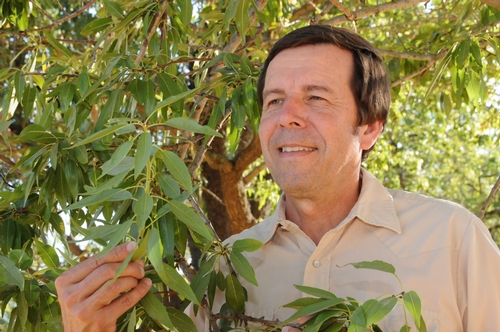Posts Tagged: Frank Zalom
The Good, the Sad and the Bad
It's been a good-news-sad-news-bad-news kind of day. Professor Frank Zalom (right) an integrated pest management (IPM) specialist with the UC Davis...

Frank Zalom
Well-Deserved Honor
Whether it's spotted-wing Drosophila, codling moth or light brown apple moth--or myriads of other invasives--integrated pest management (IPM)...

Frank Zalom

Plant-Insect Ecosytem Support
Our IPM Expert
Good news. Integrated pest management specialist Frank Zalom (right), professor of entomology at UC Davis, is the 2010 recipient of the "Award for...

In the Almonds
Distinguished Service, Distinguished Awards
Excellent work!We're glad to see that three noted entomologists at the University of California, Davis, received distinguished awards in their...
Master Gardener criticizes LBAM program
Annie Spiegelman, author of the gardening book "Talking Dirty" and a Master Gardener for UC Cooperative Extension in Marin County, wrote an opinion piece published today in the Huffington Post that mocked CDFA's and USDA's past efforts to eradicate the Light Brown Apple Moth in California.
The author seemed particularly incensed by aerial spraying of pheromones, which was part of the eradication program. In fact, the story was posted with a photo illustration showing a crowded Santa Cruz Boardwalk and beach with a plane releasing a huge white cloud overhead.
In her article, Spiegelman questioned why, during an immense fiscal crisis, $89.5 million was spent to eliminate from the state what she referred to as a "garden variety" and "humdrum" brown moth.
"So I clipped on my Master Gardener trowel-shaped lapel pin and gave the senior entomology faculty at the University of California, Davis, a jingle to see why my tax dollars were being used to stamp out the lackluster 'Light Brown Apple Moth," Spiegelman wrote.
The author noted that UC Davis entomology professors James Carey and Bruce Hammock and UC Davis Cooperative Extension entomology specialist Frank Zalom wrote to Governor Schwarzenegger in 2008 expressing their concern with the planned moth eradication program.
In their letter they said data showing the moth would become more important than other pests already in the state are unconvincing, and there is no scientific evidence that mating disruption is capable of eradicating any insect population.
In a conversation with Spiegelman, Carey reiterated the point that LBAM is not a serious pest."And even if it was a more serious pest, there is zero chance to eradicate it," Carey was quoted in the article. "Eradication is not possible because you're not eradicating an LBAM population but you're trying to eradicate 100,000 LBAM populations. There are millions of pockets of these and each pocket has a separate population."
Zalom told the writer he believes naturally occurring biological control agents will become increasingly important for control of LBAM.
"LBAM will eventually be considered an occasional pest that growers need to be aware of and one, which on occasion will require intervention. It seems to be no greater a threat than a suite of other insect pests that already occur locally," Zalom was quoted.

